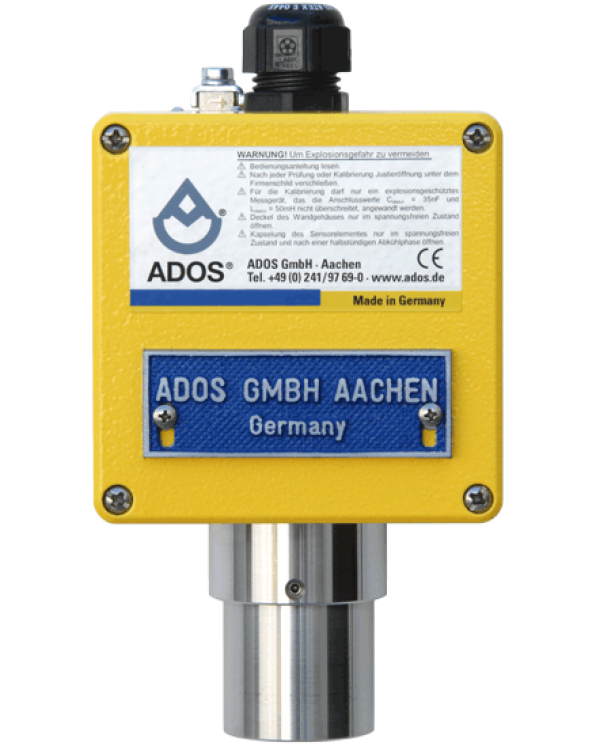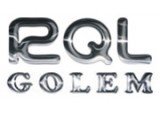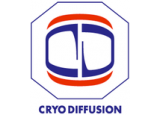GTR 196 Gas Transmitter
Application
The gas transmitter ADOS GTR 196 is suitable for continuous measurement of gases in normal areas and areas where there is a risk of explosion. By employing 6 different types of sensor, noxious, explosive and non-combustible gases and vapours can be measured. A current signal is generated that is proportional to the measured concentration of gas, which is transmitted to an evaluation unit placed in a safe area, away from any dangers of explosion.
The type test of the explosion-protected gas transmitter, is completed by the KEMA.
-
Test certificate: KEMA 03 ATEX 2403 X
-
Degree of protection: II 2 G, Ex demb [ia] IIC T6
TGS sensor
The TGS sensor contains a semiconductor sensor, which is constructed on SnO2-sintered N-substrate. When combustible or reducing gases are absorbed by the surface of the sensor, the concentration of the test gas is determined by the change in conductivity.
VQ sensor
The head of the VQ sensor functions on the principle of heat reaction. When combustible or reducing gases or vapours come in contact with the measuring element, they are subjected to catalytic combustion, which causes a rise in temperature; this rise causes a change in the resistance of the measuring element which is used as a measure of the component of gas being tested. The inert element is for compensating the temperature and conductivity of the test gas.
PID sensor
The sampled gas flows through a measurement chamber, that incorporates a UV radiating source and a pair of electrodes with opposing polarity. The gas molecules to be detected are ionized by the UV radiation. The resulting positively charged molecules and the electrons are attracted to the relevant electrode. The current generated is a measure of the gas concentration. Using the PID measuring head, volatile organic compounds (VOC) can be measured, the ionisation potential of which is less than the energy in the UV radiating source (10,6 eV), e.g. aromatic hydrocarbons like toluol (C7H8) and xylene (C8H10) as well as chlorinated hydrocarbons like trichloroethylene (CHCl3). The detection of toxic gases like phosphine (PH3) is also possible.
TOX sensor
The TOX sensor is a measurement system with an electro-chemical cell, where the sampled gas is measured by diffusion. In the case of oxygen measurement the oxygen content is reduced in an electrolyte, thus producing a small flow of current (electro-chemical process). At a constant air pressure, this current is directly proportional to the oxygen concentration in the sampled air.
IR sensor
The test gas flows through a measurement chamber that incorporates an IR radiating source and a two-channel infrared detector. The intensity of the infrared radiation is reduced as it passes through the gas molecules. The concentration of the gas can then be calculated by the magnitude of the reduction in intensity. Since only absorption of the wavelength (A) specific to the gas under test in relation to the wavelength (B) not absorbed by a test gas is considered, interference due to dust, ageing etc., is almost fully compensated.




-160x115.png)























